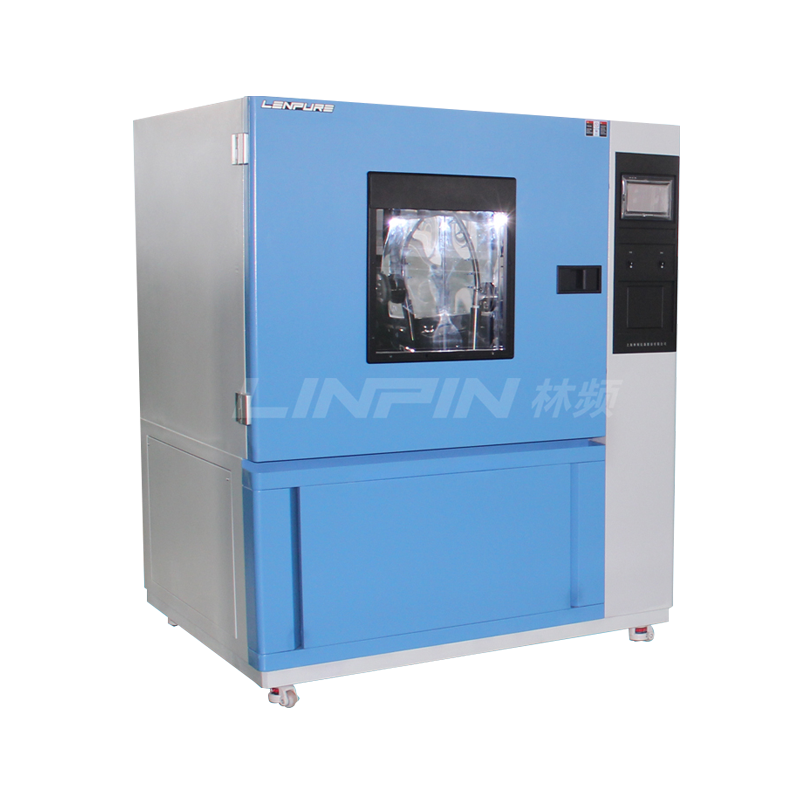

With the continuous updating of GB/T 4208-2017, IEC 60529:2013, MIL-STD-810H and other domestic and international protection-class standards, “rain testing” has evolved from a simple “water-proof check” into a systematic evaluation covering sealing reliability, material weatherability, structural integrity, electronic compatibility and more. As the core hardware of this evaluation, the installation requirements and testing purposes of rain-test chambers must be examined at the height of National Quality Infrastructure (NQI). Based on the environmental-control requirements of ISO/IEC 17025:2017 and in view of the differentiated needs of five typical industries—automotive, rail transit, photovoltaic, defence & aerospace, and consumer electronics—this paper systematically describes the technical installation conditions and cross-industry testing value, providing traceable technical references for laboratory planning, equipment selection, quality arbitration and third-party audits.

Cross-Industry Testing Purposes of Rain-Test Chambers
1.1 Automotive (incl. new-energy vehicles & parts)
a) Seal-failure-mode identification
Per LV 124 and GB/T 28046.4-2011, headlamps, traction-battery packs and ECUs are subjected to step-pressurised spray IPX5→IPX6K→IPX9K. The correlation between seal-gasket compression set and leakage current is quantified, anticipating the “condensation → electrochemical migration” failure chain.
b) Dynamic rain-match verification for vehicle body
By simulating 80 km/h driving with 0–20 m/s side wind, water-ingression differences of doors, sun-roofs and wiring-loom boots in positive/negative pressure zones are detected, supplying boundary conditions for NVH and corrosion-coupled tests.
1.2 Rail-transit industry
a) Bogie bearing-unit protection assessment
Per EN 45545-2:2020, axle-box end covers receive 60 °C, 5 L/min lateral cloud-burst while grease contamination (ISO 4406) is monitored, verifying redundant reliability of labyrinth plus contact seals.
b) Roof high-voltage insulator rain-flash test
With rain conductivity 100 µS/cm and rainfall 50 mm/h, voltage is raised to AC 35 kV; rain-flash voltage and leakage-current waveforms are recorded, giving quantitative basis for insulator selection.
1.3 Photovoltaic & energy-storage industry
a) Backsheet water-vapour transmission verification
IEC 61215:2021 MQT 15 prescribes 85 °C/85 %RH, 15 min spray / 45 min dry cycling; WVTR is tracked to ensure ≤0.2 g/m²·day.
b) Inverter rain/heat coupling test
Alternating rain and 700 W/m² irradiation evaluates IP65 heatsink thermal-resistance increase under condensation, preventing power derating caused by “water-proof over heat-dissipation”.
1.4 Defence & aerospace
a) Airborne store water-proof sealing
Per MIL-STD-810H 506.6 Proc. III, missile launchers undergo 6 h rain + vibration + thermal-shock; O-ring seal retention is verified across –55 °C→+70 °C transients.
b) Radome rain-erosion life
Ice-ball rain (Ø2–4 mm, 25 m/s) impacts for 30 min; dielectric-constant change Δε≤0.02 determines micro-crack onset.
1.5 Consumer electronics & white goods
a) Smartphone IPX8 extended immersion
At 1.5 m depth, 0.5 m/s flow, 10 °C cycling, 72 h soak, acoustic-membrane (ePTFE) air-flow decay is checked, keeping MIC/SPK shift ≤2 dB.
b) Electric-toothbrush wireless-charging base
Bathroom condensate + spray verifies IPX7 isolation groove creepage; insulation resistance ≥100 MΩ after 240 h.
Technical Installation Requirements
2.1 Civil works & utilities
a) Floor load: ≥500 kg/m² for total rig mass ≥1.5 t; 5 mm epoxy self-levelling plus PU waterproof layer prevents long-term seepage spalling.
b) Water: DN25 min SS pipe, 5 µm+1 µm dual filtration, 0.2–0.4 MPa, hardness ≤50 mg/L CaCO₃ to avoid nozzle calcification.
Drain: DN50 SUS304 siphon floor trap plus anti-odour seal, peak flow ≥300 L/min, ensuring no puddle during IPX6K.
c) Power: dedicated 380 V/50 Hz five-wire, THD≤5 %; 30 mA Type-A RCD; cabinet IP54; WAGO 221-500 series terminals against salt-mist corrosion.
2.2 Environmental control & sealing
a) Ambient 23 °C±2 °C, 50 %±10 %RH; ≥6 air changes/h exhaust to prevent ceiling condensate secondary drip.
b) Door seal: EPDM 70 Sh A, ozone ≥50 pphm, –40 °C→+150 °C; welds EN ISO 5817 Class B, 100 % PT for pinholes.
c) Pressure balance: Ø50 mm anti-siphon breather on roof prevents negative-pressure gasket dislodgement.
2.3 Safety & compliance
a) Leakage: independent 10 mA/30 ms modules for heaters, pumps, fans, meeting IEC 61010-1:2010.
b) Lightning & EMC: earth ≤1 Ω, shielded-twisted-pair plus ferrite; CISPR 11 Class A.
c) Chemical: 316 L tank for acid-rain (NaCl, surfactant) test; neutralisation pit meets GB 8978-1996 grade-III discharge.
2.4 Calibration & metrology
a) Flowmeter: 0.5-class electromagnetic, annually traceable to JJG 1033-2007, spray-intensity error ≤±2 %.
b) Angle & distance: laser alignment keeps 0°, 30°, 60°, 90° deviation ≤±0.5°, distance to specimen ±2 mm.
c) Data: four-channel T, RH, pressure, conductivity, ≥1 Hz, 10-year storage, 21 CFR Part 11 audit trail.
Quality-Control & Maintenance
Daily: nozzle blockage, pump noise, level-switch snap test.
Weekly: seal elastic recovery (30 % compression, 24 h, ≥80 % rebound), conductivity two-point cal.
Annual: ultrasonic wall thickness (corrosion allowance ≥1 mm), PLC battery (≥2.8 V), safety-valve lift (±5 % set-point).
Only by rigorously implementing the above specifications in civil, water & drain, electrical, metrology, safety and environmental dimensions can a laboratory achieve “test-data first-pass yield ≥99 %, repeatability ≤5 %”.
Our company operates a CNAS LXXXX laboratory accredited for IPX1-IPX9K, offering turnkey PQP (Plant-Install-Qualify-Train) services. Enterprises, third-party labs and certification bodies are welcome to our Dongguan headquarters for witness testing and technical exchange, jointly advancing China’s high-end testing equipment and quality-infrastructure upgrade.